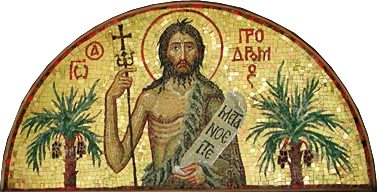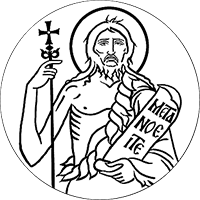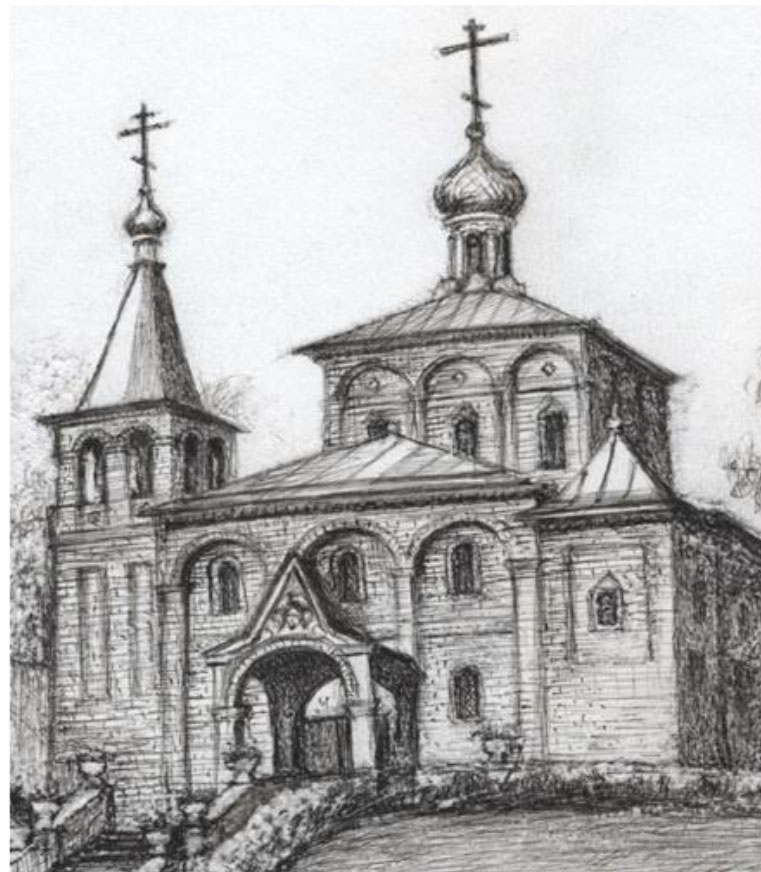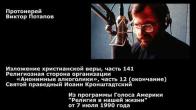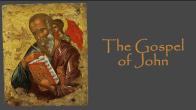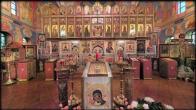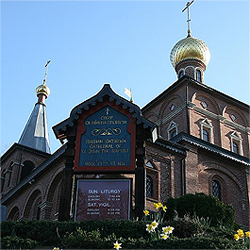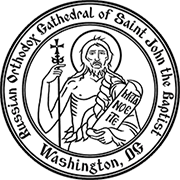You are here
The Resurrection
From V. N. Lossky's book "Orthodox Theology: An Introduction,
" translated by Ian and Ihita Kesarcodi-Watson)
The Father accepts the Son's sacrifice " "by economy" ("po domostroitelstvu"): "man had to be sanctified by God's humanity" (St. Gregory of Nazianzus, Oration 45, On the Holy Pascha). Kenosis [God's self-limitation, His Divine condescension, especially in taking on human nature in Christ - Ed.] culminates and ends with Christ's death, to sanctify the entire human condition, including death. Cur Deus homo? Not only because of our sins but also for our sanctification, to introduce all the moments of our fallen life into that true life which never knows death. By Christ's resurrection, the fullness of life is inserted into the dry tree of humanity.
Christ's work therefore presents a physical, even biological, reality. On the cross, death is swallowed up in life. In Christ, death enters into divinity and there exhausts itself, for "it does not find a place there." Redemption thus signifies a struggle of life against death, and the triumph of life. Christ's humanity constitutes the first fruits of a new creation. Through it a force for life is introduced into the cosmos to resurrect and transfigure it in the final destruction of death. Since the Incarnation and the Resurrection death is enervated, is no longer absolute. Everything converges towards the apokataspasis ton panton, that is to say, towards the complete restoration of all that is destroyed by death, towards the embracing of the whole cosmos by the glory of God become all in all things, without excluding from this fullness the freedom of each person before that full consciousness of his wretchedness which the light divine will communicate to him.
And so we must complete the legal image of redemption by a sacrificial image. Redemption is also the sacrifice where Christ, following the Epistle to the Hebrews, appears as the eternal sacrificer, the High Priest according to the order of Melchizedek Who finishes in heaven what He began on earth. Death on the cross is the Passover of the New Alliance, fulfilling in one reality all that is symbolized by the Hebrew Passover. For freedom from death and the introduction of human nature into God's Kingdom realize the only true Exodus. This sacrifice, this surrender of will itself to which Adam could not consent, certainly represents an expiation. But above all, it represents a sacrament, sacrament par excellence, the free gift to God, by Christ in His humanity, of the first fruits of creation, the fulfillment of that immense sacramental action, devolving first upon Adam, which the new humanity must complete, the offering of the cosmos as receptacle of grace. The Resurrection operates a change in fallen nature, opens a prodigious possibility: the possibility of sanctifying death itself. Henceforth death is no longer an impasse, but a door into the Kingdom. Grace is given back to us, and if we carry it as "clay vessels," or receptacles still mortal, our fragility will now take on a power which vanquishes death. The peaceful assurance of martyrs, insensible not only to fear but also to physical pain itself, proves that an effective awareness of the Resurrection is henceforth possible to the Christian.
St. Gregory of Nyssa has well emphasized this sacramental character of the Passion. Christ, he said, did not wait to be forced by Judas's betrayal, the wickedness of the priests, or the people's lack of awareness: "He anticipated this Will of evil, and before being forced, gave Himself freely on the eve of the Passion, Holy Thursday, by giving His flesh and blood." It is the sacrifice of the immolated lamb before the beginning of the world that is so freely fulfilled here. The true Passion begins on Holy Thursday, but in total freedom.
Soon after came Gethsemane, then the cross. Death on the cross is that of a divine person: submitted to by the humanness of Christ, it is consciously suffered by His eternal hypostasis. And the separation of body and soul, the fundamental aspect of death also breaks in upon the God-man. The soul that descends to Hell remains "enhypostasized" in the Word, and also the body hanging on the cross. Similarly, the human person remains equally present in His body recaptured by the elements, as in His soul. That is why we venerate the relics of the saints. But even more so is this true in the case of Christ, for divinity remains attached both to the body which slumbers the "pure sleep" of Holy Saturday in the sepulchre, and to the victorious soul which batters down the doors of hell How, indeed, could death destroy this person who suffers it in all its tragic estrangement, since this person is divine? That is why the Resurrection is already present in the death of Christ. Life springs from the tomb; it is manifested by death, in the very death of Christ. Human nature triumphs over an anti-natural condition. For it is, in its entirety, gathered up in Christ, "recapitulated" by Him, to adopt the expression of St. Irenaeus. Christ is the Head of the Church, that is to say, of the new humanity in whose heart no sin, no adverse power can henceforth finally separate man from grace. In Christ, a man's life can always begin afresh, however burdened with sin. A man can always surrender his life to Christ, so that He may restore it to him, liberated and whole. And this work of Christ is valid for the entire assemblage of humanity, even beyond the visible limits of the Church. All faith in the triumph of life over death, every presentiment of the Resurrection, are implicit belief in Christ: for only the power of Christ raises, and will raise, the dead. Since the victory of Christ over death, the Resurrection has become universal law for creation; and not only for humanity, but also for the beasts, the plants and the stones, for the whole cosmos in which each one of us is the head. We are baptized in the death of Christ, shrouded in water to rise again with Him. And for the soul lustrated in the baptismal waters of tears, and ablaze with the fire of the Holy Spirit, the Resurrection is not only hope but present reality. The parousia [the Second Coming of Christ - Ed.] begins in the souls of the saints, and St. Simeon the New Theologian can write: "For those who became children of the light and sons of the day to come, for those who always walk in the light, the Day of the Lord will never come, for they are already with God and in God." An infinite ocean of light flows from the risen body of the Lord.
PARISH LIFE
RECENT VIDEOS
Address of our Cathedral
Subscribe to our mailing list
While all the materials on this site are copyrighted, you may use them freely as long as you treat them
with respect and provide attribution on the Russian Orthodox Cathedral of St.John the Baptist of Washington DC.
